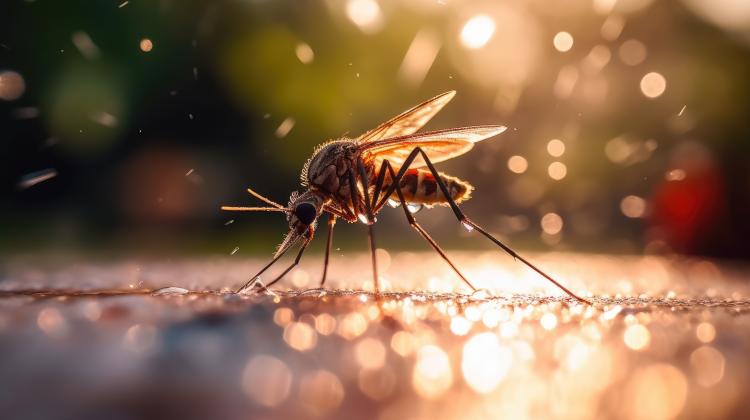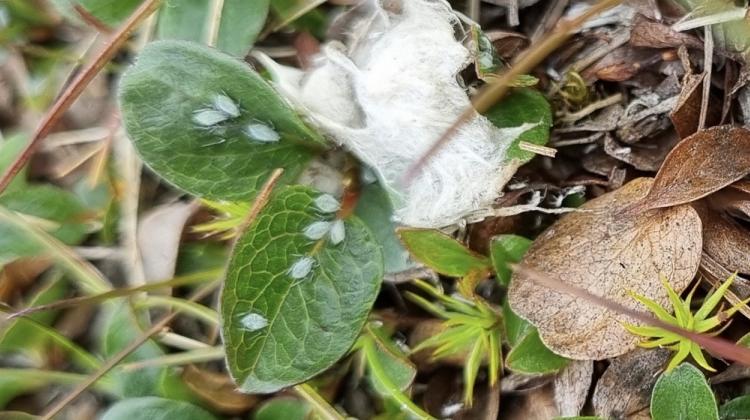Researcher discover trick aquatic insects use to escape predators
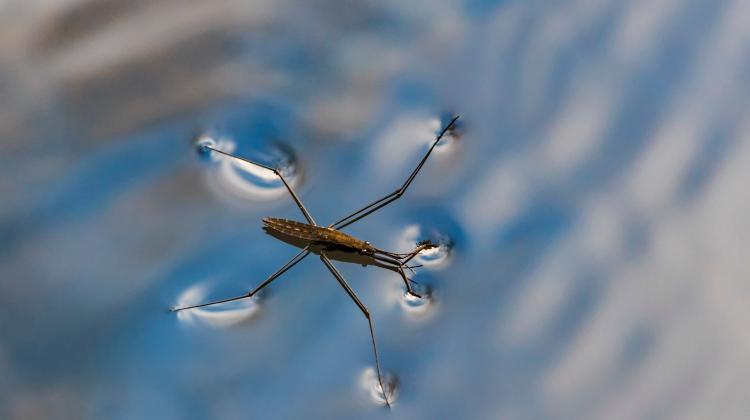 Gerris lacustris. Credit. Adobe Stock
Gerris lacustris. Credit. Adobe Stock
When water striders escape from predators, they bounce off the water surface in a quick jump. Larger and heavier species must use a new mechanism to escape successfully. Scientists have just found out what it is.
Water striders (Gerridae) are insects from the group of bugs that live on the water surface. They appear on all continents, usually in ponds, lakes, or slowly or quickly flowing waters. Several species can even survive on the surface of ocean waters. The most common species in Poland are the relatively small Gerris lacustris and the larger Aquarius paludum, whose body reaches a length of about 1.5 cm and weight does not exceed 60 mg.
How do water striders jump? Water is their mini-trampoline
Water striders stay on the water surface thanks to their long legs covered with fine hairs. The presence of these microscopic hairs creates strong hydrophobic properties and allows these insects to take advantage of the surface tension of water. Under the pressure of their legs, the water surface bends, forming tiny depressions.
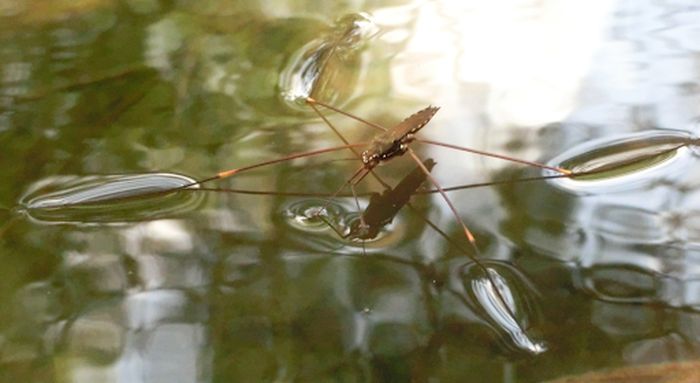
They feed on other insects that appear on the water surface, and they themselves may fall prey to underwater predators. When they want to escape from attacking backswimmers or fish, they use the depressions made by their legs as tiny trampolines, allowing them to jump quickly.
The stronger the pressure on the surface film and the larger the depression, the greater the surface tension force and the faster the jump. Insects do not pierce the water surface with their legs, because then the surface tension force would be zero - analogous to the situation when the surface of the trampoline is broken. The jumping speed they achieve is up to 1.6 m/s.
The largest water striders in the world jump differently
Until recently, scientists thought that all water striders jumped this way. However, they drew these conclusions based on studies only of smaller species that were easily accessible to researchers.
New research conducted in the tropical forests of Pu Mat National Park in Vietnam has shown a different mechanism used by the world's largest water striders, whose leg span can reach up to 30 cm. This concerns the species Gigantometra gigas and other species weighing more than 80 mg.
Scientists from Korea, Vietnam, Poland and France observed insects in their natural habitats. Analyses have shown that, unlike smaller water striders, the giant species break the water surface when their legs press against it as they jump.
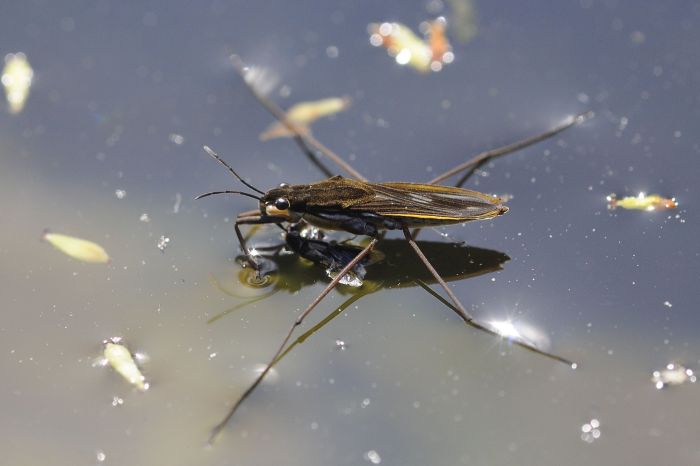
The scientists published their research results in PNAS. Professor Piotr G. Jabłoński from the Museum and Institute of Zoology of the Polish Academy of Sciences participated in the project and collaborated with biologists and engineers from Seoul National University, Daegu Gyeongbuk Institute of Science & Technology (DGIST) in Korea, with the participation of a French researcher from École Polytechnique during her visits to Korea.
'As a field biologist who sees the true value of science based on observations of animals in their natural habitats, I was fed up with the common practice of research based on convenient observations of insects present +right under our noses+ near university campuses. Therefore, together with Korean and Vietnamese colleagues, I went on several field expeditions in Vietnam, where we discovered a new mechanism in the world's largest insect that spends its entire life on the water surface - the water strider Gigantometra gigas, weighing up to 0.5 grams,’ says the publication co-author Professor Piotr G. Jabłoński.
After filming their jumps at 1,000 frames per second, researchers discovered a new mechanism. 'We observed that these giant water striders break the water's surface film as they jump. Therefore, the +trampoline+ mechanism is applied only to the initial moments of the jump before the rupture of the film. Then the legs, surrounded by a layer of air, move down and push the water down and the water skier's body up. In this way, they use the water's drag force, just like a boat's oars, which push the water backwards to move the boat forward. We discovered that these striders have exceptionally long hairs on their legs, which help create a film of air around the leg,’ Jabłoński says.
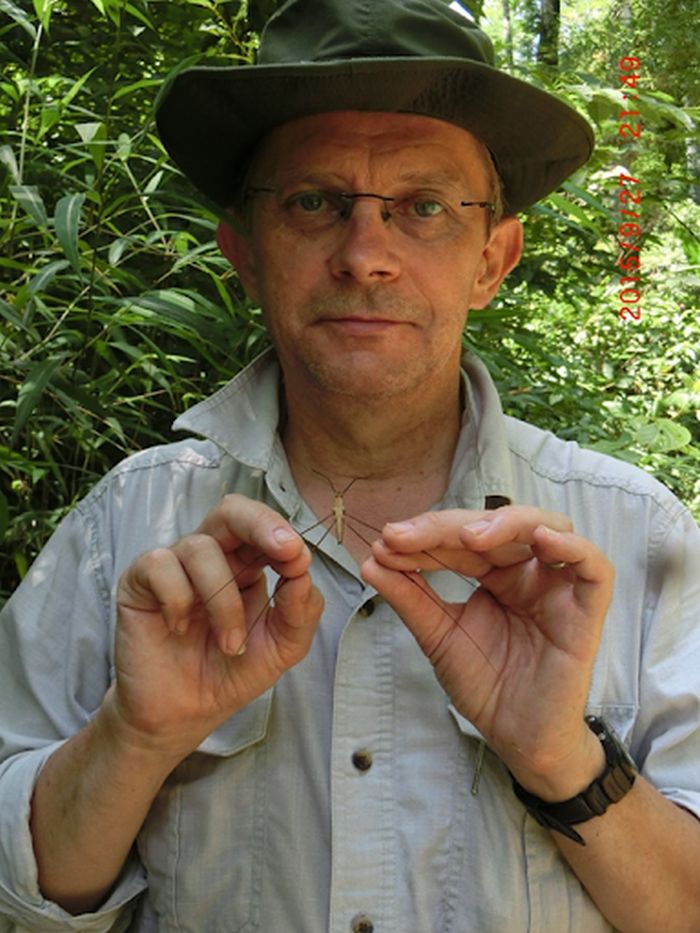
Too heavy for a quick jump
'Then', Jabłoński explains, 'together with engineers, we have proposed a mathematical model that explains why smaller water striders use only the force of surface tension, while larger species use a combination of two forces: surface tension and drag'.
If large water striders jumped without breaking the surface film, it would result in a slower jump that would make them vulnerable to predators. The largest species have therefore developed a slightly different method to achieve a speed that can protect them from fish attack. This speed is comparable to that achieved by smaller species, reaching or exceeding 1 m/s.
The discovery shows that closely related species can use different physical mechanisms, depending on their size, to achieve the same result - escaping from a predator.
The international team's findings are interesting from both an engineering and evolutionary point of view. They provide engineers with inspiration for new robots that move on water. They provide biologists with a basis for comparisons between different species of water striders to understand how the behaviour of individual species evolved with increasing body size.
PAP - Science in Poland, Ewelina Krajczyńska-Wujec
ekr/ agt/ kap/
tr. RL
Przed dodaniem komentarza prosimy o zapoznanie z Regulaminem forum serwisu Nauka w Polsce.







